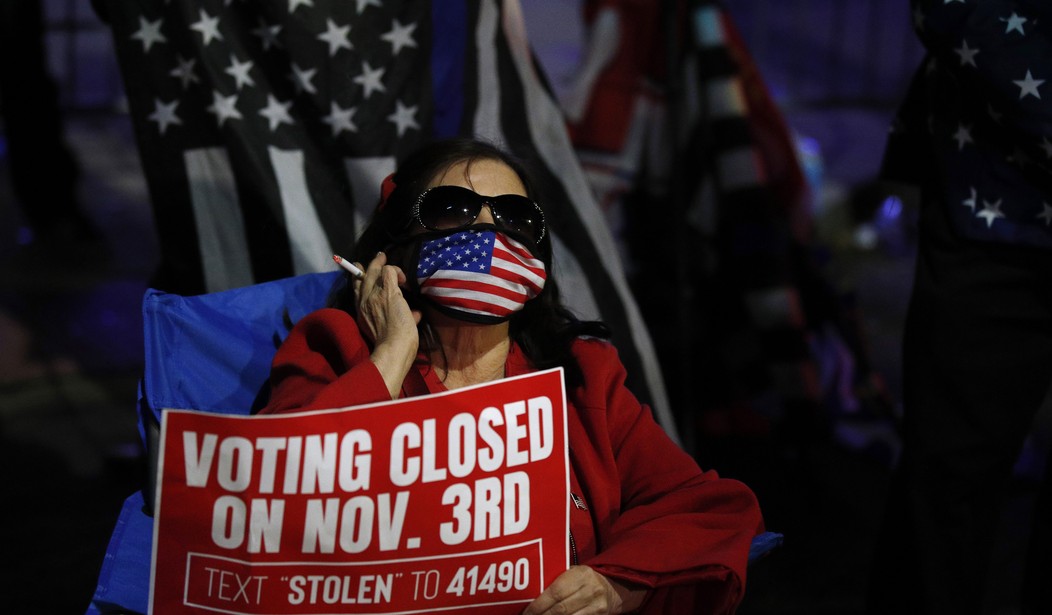On November 10, 2020, the NAACP, joined by Common Cause, the Pennsylvania League of Women Voters, and several other Democrat Party interest groups, filed a Motion to Intervene and filed a responsive brief in the new lawsuit brought by the Trump Campaign against the Pennsylvania Secretary of the Commonwealth and seven Pennsylvania County Boards of Elections with regard to their handling of mail-in ballots as part of the Nov. 3, 2020, Presidential Election.
At issue is what happened with respect to mail-in ballots that were found to be defective in one of a few different ways — a defect which caused the mail-in ballot to be rejected and void.
Among the problems that would void a ballot was if the ballot itself was not enclosed in an inner “security-sleave” within the ballot envelope. The mail-in ballot would also be rejected if the voter did not sign and date the “declaration” printed on the ballot envelope prior to mailing it to the Board of Elections.
“Pre-canvassing” of mail-in ballots is defined in Pennsylvania election law as allowing ballot envelopes to be opened, the ballot removed, and the votes tabulated. The difference between “pre-canvassing” and “canvassing” is that the Election Board may not make any public announcement of the results of pre-canvassing.
By statute in Pennsylvania, “pre-canvassing cannot begin prior to 7:00 am on election day. Title 25 P.S. Sec. 3146.8(g)(1.1) states:
The county board of elections shall meet no earlier than seven o’clock A.M. on election day to pre-canvass all ballots received prior to the meeting. A county board of elections shall provide at least forty-eight hours’ notice of a pre-canvass meeting by publicly posting a notice of a pre-canvass meeting on its publicly accessible Internet website. One authorized representative of each candidate in an election and one representative from each political party shall be permitted to remain in the room in which the absentee ballots and mail-in ballots are pre-canvassed. No person observing, attending or participating in a pre-canvass meeting may disclose the results of any portion of any pre-canvass meeting prior to the close of the polls.
The complaint filed by the Trump Campaign alleges that County Boards of Election pre-canvassed ballots prior to 7:00 am on election day. In doing so, they were able to identify voters whose ballots were defective and would be rejected. Elections officials then disclosed that information to voters and others which resulted in the voter being allowed to cast a provisional ballot on election day.
The motion to intervene filed by the NAACP and others confirms, with testimonials from voters, that this illegal conduct did take place.
Joseph Ayeni is a seventy-seven year old African American voter whose ballot was rejected for failure to include a secrecy envelope…. He was called on Election Day by election officials about this problem and cast a provisional ballot that day…
….
Meril Lara is a twenty-six year old Hispanic Philadelphia County voter who voted provisionally after receiving an email notification from election officials that her ballot was rejected for failure to include a secrecy envelope….
Ricardo Morales is a forty-eight year old Hispanic Philadelphia County voter whose mail-in ballot was cancelled or rejected, likely due to a signature error…. His full, Hispanic name has 4 names but he signed using the anglicized version, which has only two names…. SEIU texted him to let him know his ballot had been rejected on Election Day (he is a member of the American Federation of Musicians), so he voted provisionally….
Natalie Price is a seventy-three year old Montgomery County voter who votes in every election and who voted by mail-in ballot in order to avoid exposure to COVID-19, which she is at high risk for due to her age…. Ms. Price received her mail-in ballot several weeks ago and returned it right away, even making sure that a postal worker time-stamped it….. On November 1st and 2nd, Ms. Price received three calls from the Democratic Party informing her that her ballot had been rejected (though they weren’t sure why)….. The first site Ms. Price visited in Norristown to attempt to cure her ballot was drop-off only; she went to a second site where she learned that her ballot had been marked as defective because she did not hand-write her name and address on the ballot…. Ms. Price was not aware that she needed to hand-write her name and address in non-cursive print because that information was preprinted on the envelope and it seemed redundant to write it again…. Her ballot was signed, dated, and otherwise complied with all other ballot instructions…. Ms. Price would be devastated if her vote were thrown out, especially after she drove to a different town in the pouring rain to cure her ballot….
….
Taylor Stover is a twenty-six year old African American Philadelphia County voter whose ballot was rejected due to a problem with her signature…. She voted provisionally on Election Day because she says “[t]his is the most consequential election that I have experienced and I want my ballot to count.”
The declarations of the individuals identified show that officials in Philadelphia County and Montgomery County released pre-canvassing information — that ballots were being rejected, including the names of the voters involved — to third parties, and did so after illegally pre-canvassing ballots prior to 7:00 am on election day. Ms. Price declares that she received three calls from the Democrat Party on November 1 and 2 telling her that her ballot was being rejected.
Mr. Morales said he was advised by his union that his ballot had been rejected. Others said they were advised by unnamed “election officials” that their ballots were being rejected.
These declarations establish as a factual matter that the allegations of the complaint are true — the remaining question is simply how extensive were these violations? That is a question that can only be answered through discovery.
The seven County Boards are going to be forced to produce information about the number of ballots that were rejected, the reasons for the rejection, and the rate of rejection in terms of the total number of mail-in ballots received. That rejection rate is then going to be compared to the rejection rates of counites all across Pennsylvania. If the rejection rate is substantially lower in the seven counties named as defendants, the election officials in those counties are going to have to explain their application of the election laws in rejecting ballots.














Join the conversation as a VIP Member